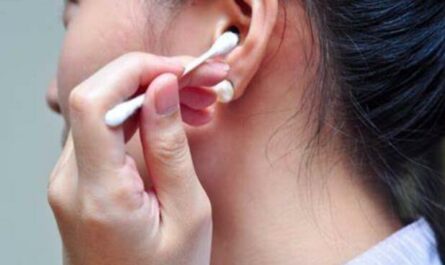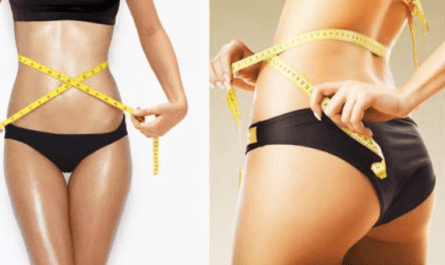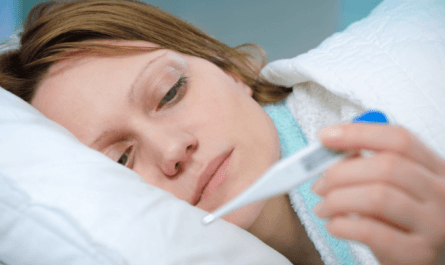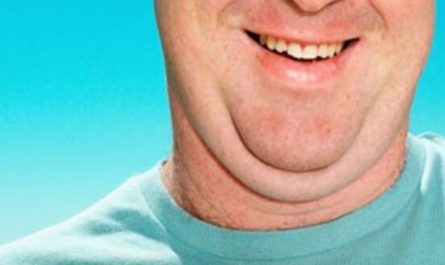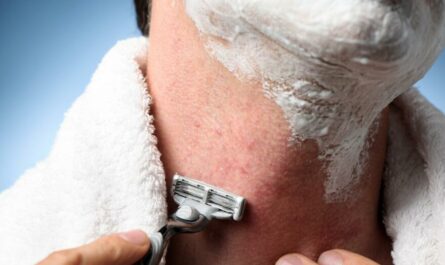Many people, especially women, struggle with the appearance of a dark shadow on their upper lip. This pigmentation, often referred to as a “mustache shadow,” can be a source of self-consciousness and insecurity. Fortunately, there are several methods to help reduce and even eliminate this issue. In this article, we’ll explore the causes and how to get rid of shadow on the upper lip, from at-home remedies to professional treatments.
What Causes Upper Lip Shadow?
Understanding the underlying causes of upper lip shadow is crucial in determining the best course of treatment. Some of the most common factors that contribute to this pigmentation include:
Hormonal changes and imbalances: Fluctuations in hormone levels, which can occur during puberty, pregnancy, menopause, or due to conditions like polycystic ovary syndrome (PCOS). This can stimulate an increase in melanin production. The excess melanin can cause the skin on the upper lip to darken, resulting in a noticeable shadow.
Genetics and natural skin pigmentation: An individual’s genetic makeup plays a significant role in determining their natural skin pigmentation. Some people are simply more prone to developing darker patches of skin, including on the upper lip, due to their inherited genes.
Sun exposure and tanning: Prolonged exposure to ultraviolet (UV) rays from the sun or tanning beds can trigger the skin to produce more melanin as a defense mechanism. This increased melanin production can lead to the development of dark spots and patches, including upper lip shadow.
Certain medications and health conditions: Some medications, such as birth control pills, hormone replacement therapy, and certain antibiotics, can alter hormone levels in the body and contribute to increased pigmentation. Additionally, health conditions that affect hormone balance, like PCOS or thyroid disorders, can also play a role in the development of upper lip shadow.
Aging and skin thinning: As we age, our skin naturally becomes thinner and less elastic due to a decrease in collagen and elastin production. This thinning of the skin can make underlying pigmentation more visible, leading to the appearance of dark shadows or spots.
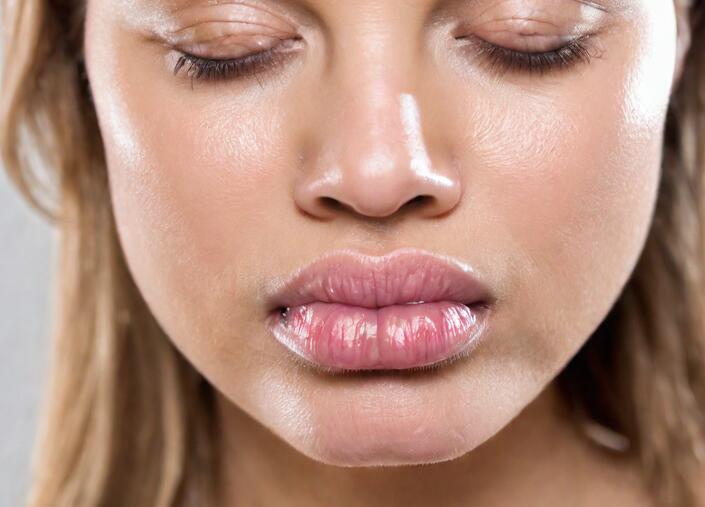
Home Remedies to Reduce Upper Lip Shadow
For those looking to reduce the appearance of upper lip shadow without resorting to professional treatments, there are several effective at-home remedies worth trying.
1. Lemon Juice
Lemon juice is a popular natural remedy for skin lightening due to its high vitamin C content and bleaching properties. The citric acid in lemon juice helps to exfoliate the skin and reduce the appearance of dark spots. Here’s how to use it:
- Squeeze fresh lemon juice and apply it directly to your upper lip using a cotton ball.
- Leave it on for 10-15 minutes, then rinse off with cool water.
- Repeat daily for best results.
Note: Lemon juice can cause skin irritation or dryness, so be cautious if you have sensitive skin. It’s also important to avoid sun exposure after applying lemon juice, as it can make your skin more sensitive to UV rays.
2. Potato Juice
Potatoes contain an enzyme called catecholase, which has skin-lightening properties. This enzyme works by inhibiting the production of melanin, the pigment responsible for skin color. Here’s how to use potato juice to fade your upper lip shadow:
- Grate a potato and extract its juice.
- Apply the juice to your upper lip using a cotton ball or your fingers.
- Leave it on for 15-20 minutes, then rinse with cool water.
- Repeat daily for noticeable results.
You can also apply thin slices of potato directly to your upper lip and leave them on for 15-20 minutes before rinsing off.
3. Yogurt and Honey
The combination of yogurt and honey can work wonders for lightening dark spots on your upper lip. Yogurt contains lactic acid, which gently exfoliates the skin and helps to reduce pigmentation. Honey, on the other hand, has antibacterial and moisturizing properties that can help to soothe and nourish the skin. Here’s how to make this simple mask:
- Mix equal parts plain yogurt and honey until well combined.
- Apply the mixture to your upper lip and leave it on for 15-20 minutes.
- Rinse off with lukewarm water and pat dry.
- Use this mask 2-3 times a week for best results.
For an extra boost, you can add a pinch of turmeric powder to the mixture. Turmeric contains curcumin, a compound known for its skin-lightening properties.
4. Turmeric and Milk
Turmeric is a spice that has been used for centuries in traditional medicine for its skin-lightening properties. Its active ingredient, curcumin, works by inhibiting the production of melanin and reducing inflammation. Here’s how to make a turmeric and milk paste:
- Mix a pinch of turmeric powder with enough milk to create a thick paste.
- Apply the paste to your upper lip and let it dry for 10-15 minutes.
- Rinse off with lukewarm water and pat dry.
- Repeat 2-3 times a week for best results.
You can also add a pinch of honey to the mixture for added moisturizing benefits.
5. Aloe Vera Gel
Aloe vera gel is a natural skin-lightening agent that can help reduce the appearance of dark spots on your upper lip. It contains aloin, a compound that inhibits the production of melanin and helps to even out skin tone. Here’s how to use it:
- Extract fresh aloe vera gel from an aloe leaf or use a store-bought gel.
- Apply the gel to your upper lip and massage gently for a few minutes.
- Leave it on for 15-20 minutes, then rinse with cool water.
- Repeat daily for best results.
Aloe vera gel is also known for its soothing and moisturizing properties, making it an excellent choice for those with sensitive skin.
6. Cucumber Juice
Cucumber juice is known for its skin-lightening and soothing properties. It contains vitamin C and caffeic acid, both of which help to reduce pigmentation and even out skin tone. Here’s how to use it:
- Grate a cucumber and extract its juice.
- Apply the juice to your upper lip using a cotton ball.
- Leave it on for 15-20 minutes, then rinse with cool water.
- Repeat daily for noticeable results.
You can also apply thin slices of cucumber directly to your upper lip and leave them on for 15-20 minutes before rinsing off.
7. Papaya Pulp
Papaya contains an enzyme called papain, which has skin-lightening properties. This enzyme works by breaking down dead skin cells and promoting cell turnover, which can help to reduce the appearance of dark spots. Here’s how to use papaya pulp:
- Mash a ripe papaya until it forms a smooth pulp.
- Apply the pulp to your upper lip and leave it on for 15-20 minutes.
- Rinse off with cool water and pat dry.
- Repeat 2-3 times a week for best results.
You can also add a pinch of turmeric powder to the papaya pulp for an extra skin-lightening boost.
8. Tomato Juice
Tomatoes are rich in lycopene, a powerful antioxidant that can help lighten dark spots on the skin. Lycopene works by protecting the skin from UV damage and reducing inflammation, which can contribute to hyperpigmentation. Here’s how to use tomato juice:
- Extract fresh tomato juice by blending a tomato and straining the pulp.
- Apply the juice to your upper lip using a cotton ball.
- Leave it on for 15-20 minutes, then rinse with cool water.
- Repeat daily for noticeable results.
You can also mix tomato juice with a pinch of turmeric powder for added skin-lightening benefits.
9. Orange Peel Powder
Orange peel powder is a natural skin-lightening agent that can help fade the shadow on your upper lip. It contains vitamin C, which helps to reduce pigmentation and even out skin tone. Here’s how to use it:
- Dry orange peels in the sun and grind them into a fine powder.
- Mix the powder with enough milk or yogurt to create a paste.
- Apply the paste to your upper lip and leave it on for 15-20 minutes.
- Rinse off with lukewarm water and pat dry.
- Repeat 2-3 times a week for best results.
You can also add a pinch of turmeric powder to the mixture for an extra skin-lightening boost.
10. Gram Flour and Turmeric
Gram flour, also known as chickpea flour, can help exfoliate and lighten the skin when combined with turmeric. Gram flour contains enzymes that help to remove dead skin cells and promote cell turnover, while turmeric contains curcumin, a compound known for its skin-lightening properties. Here’s how to make this simple mask:
- Mix 1 tablespoon of gram flour with a pinch of turmeric powder and enough milk or yogurt to create a paste.
- Apply the paste to your upper lip and leave it on for 15-20 minutes.
- Rinse off with lukewarm water and pat dry.
- Repeat 2-3 times a week for best results.
You can also add a pinch of honey to the mixture for added moisturizing benefits.
11. Milk and Honey
Milk contains lactic acid, which can help exfoliate and lighten the skin, while honey has moisturizing and antibacterial properties. Together, they make a powerful combination for reducing the appearance of dark spots on your upper lip. Here’s how to use this simple remedy:
- Mix equal parts milk and honey until well combined.
- Apply the mixture to your upper lip using a cotton ball.
- Leave it on for 15-20 minutes, then rinse with lukewarm water.
- Repeat daily for noticeable results.
You can also add a pinch of turmeric powder to the mixture for an extra skin-lightening boost.
12. Oatmeal and Buttermilk
Oatmeal is a gentle exfoliant that can help remove dead skin cells and lighten dark spots, while buttermilk contains lactic acid, which can help even out skin tone. Together, they make a nourishing and effective mask for reducing the appearance of upper lip shadow. Here’s how to make this simple mask:
- Mix 1 tablespoon of ground oatmeal with enough buttermilk to create a paste.
- Apply the paste to your upper lip and leave it on for 15-20 minutes.
- Rinse off with lukewarm water and pat dry.
- Repeat 2-3 times a week for best results.
You can also add a pinch of turmeric powder or honey to the mixture for added skin-lightening and moisturizing benefits.
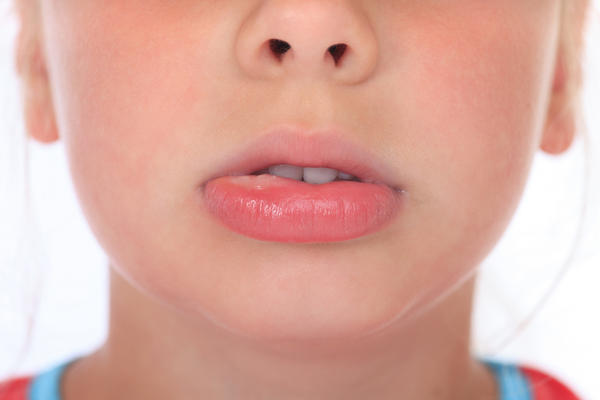
Medical Treatments for Upper Lip Shadow
If home remedies don’t yield the desired results, you can consider medical treatments under the guidance of a dermatologist:
1. Hydroquinone Creams
Prescription-strength hydroquinone creams can effectively lighten dark spots by inhibiting melanin production. These creams typically contain 4% hydroquinone and are applied directly to the affected area. However, it’s crucial to use these creams under medical supervision to avoid potential side effects, such as skin irritation or further pigmentation.
2. Laser Therapy
Laser treatments, such as Q-switched lasers or intense pulsed light (IPL) therapy, can target and break down the excess pigment in the skin, resulting in a more even skin tone.
These treatments work by emitting light energy that is absorbed by the pigmented cells, causing them to shatter and be naturally eliminated by the body. Multiple sessions may be required for optimal results.
3. Chemical Peels
A dermatologist can perform chemical peels using alpha-hydroxy acids (AHAs) or beta-hydroxy acids (BHAs) to exfoliate the skin and reduce pigmentation on the upper lip.
These peels work by removing the top layer of skin, promoting cell turnover, and revealing brighter, more even-toned skin underneath. Common AHAs used in chemical peels include glycolic acid and lactic acid, while salicylic acid is a popular BHA.
4. Microdermabrasion
This minimally invasive procedure involves using a special device to gently sand the skin, removing the top layer of dead skin cells and promoting cell renewal. Microdermabrasion can help reduce the appearance of dark spots and even out skin tone on the upper lip.
Makeup Techniques to Conceal Upper Lip Shadow
While working on reducing upper lip shadow, you can use makeup techniques to conceal the pigmentation:
1. Color correcting
Color correcting involves using complementary colors to neutralize unwanted tones in the skin. For upper lip shadow, which tends to have a bluish or grayish undertone, use an orange or peach-toned color corrector to counteract the darkness. Apply the color corrector to the shadowed area before the foundation.
2. Concealing and foundation
After color correcting, use a concealer that matches your skin tone to further cover the upper lip shadow. Apply the concealer in thin layers, building up coverage as needed. Follow with a foundation that matches your skin tone, blending it seamlessly into the concealer for a natural finish.
3. Setting and touch-ups
To ensure your makeup lasts throughout the day, set the concealer and foundation with a translucent powder. Use a fluffy brush to apply the powder, focusing on the upper lip area. Carry a small concealer and powder compact for touch-ups on the go.
How to Prevent Upper Lip Shadow?
Prevention is key when it comes to maintaining an even skin tone on your upper lip. Here are some tips to keep in mind:
1. Sun Protection
Always apply a broad-spectrum sunscreen with an SPF of at least 30 to your face, including your upper lip, before stepping out in the sun. Reapply every 2 hours for optimal protection. Look for sunscreens that contain physical blockers like zinc oxide or titanium dioxide, as they provide effective protection against both UVA and UVB rays.
2. Gentle Hair Removal
If you choose to remove hair from your upper lip, opt for gentle methods like threading or using depilatory creams instead of harsh waxing or plucking. Waxing and plucking can cause trauma to the skin, leading to inflammation and potential pigmentation issues.
3. Maintain a Balanced Diet
Eat a diet rich in fruits, vegetables, and whole grains to provide your skin with essential nutrients and antioxidants that promote a healthy, glowing complexion. Foods high in vitamin C, such as citrus fruits, berries, and leafy greens, can help brighten the skin and reduce pigmentation.
4. Stay Hydrated
Drink plenty of water throughout the day to keep your skin hydrated and maintain its natural radiance. Aim for at least 8 glasses of water per day, and more if you engage in physical activity or live in a hot, humid climate.
5. Avoid Excessive Heat
Exposure to excessive heat, such as from cooking over an open flame or spending prolonged periods in a sauna, can stimulate melanin production and worsen pigmentation on the upper lip. Take precautions to protect your face when engaging in such activities.
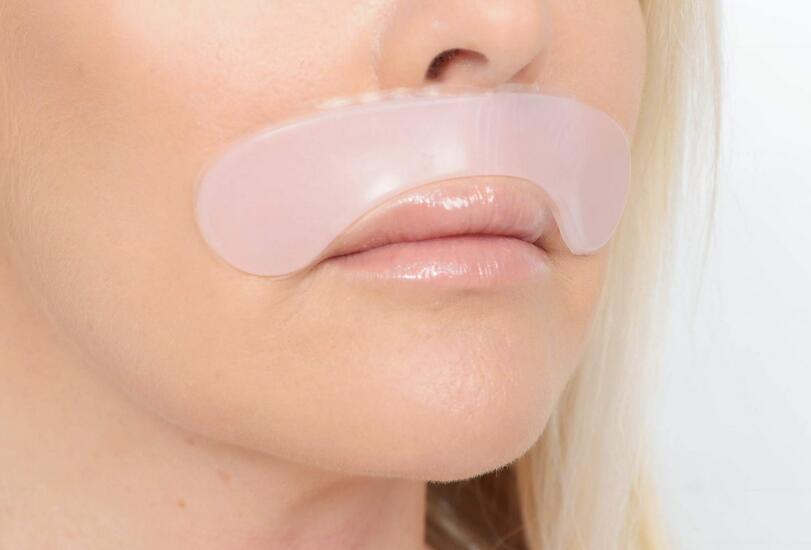
When to Seek Professional Help?
While at-home remedies and makeup techniques can be effective for managing upper lip shadow, there are some cases where seeking professional help may be necessary or beneficial. Here are some situations where it’s recommended to consult with a skincare professional or dermatologist:
- If your upper lip shadow persists or worsens despite consistent use of at-home remedies and sun protection measures
- If you suspect that an underlying medical condition, such as a hormonal imbalance or thyroid disorder, may be contributing to your pigmentation
- If you have sensitive skin or a history of allergic reactions to skincare products and are unsure which treatments are safe for you to use
- If you’re interested in exploring professional treatment options, like chemical peels, laser therapy, or microdermabrasion, and want to ensure you choose the most appropriate treatment for your skin type and concerns
- If your upper lip shadow is causing significant distress or impacting your self-confidence and quality of life

